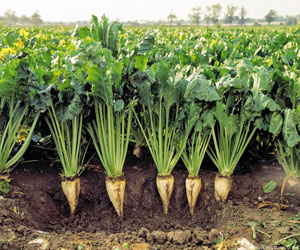
Drip Irrigation for Sugar Beet
Drip irrigation provides more benefits than just yield. It can also minimize pest and disease risk.
For example, overhead irrigation (pivots and sprinklers) increases risk of leaf disease. Drip irrigation keeps the leaves dry. There is also potential to chemigate directly through the drip irrigation system (dependent on local regulations).
Russia is the largest sugar beet producer (by hectares) globally. However, irrigation is not common and farmers are completely dependent on rainfall.
Yields fluctuate and are heavily impacted by rainfall. As shown in the graph below, the yield in 2010/11 dropped by 42% compared to the year before. This is primarily the result of the drought experienced that year.
Not having irrigation makes your crop vulnerable to these fluctuations.
Drip irrigation provides you with increased assurance of a quality crop regardless of rainfall.
Even during years of good rainfall, you are still losing on yield potential by not irrigating.
Without consistent irrigation, you put your sugar beet plants at risk of water stress and reduced plant growth and yield.
Use drip irrigation to reduce plant water stress for improved plant growth and yield potential.
The graph below shows average precipitation compared to PET (potential evapotranspiration).
The variance is greatest during the driest period of the year (highlighted in grey) and can lead to permanent yield loss. The yield lost in this period cannot be recovered at a later date.
Source: https://www.rivulis.com/sugar-beet-irrigate-with-drip/#:~:text=Drip%20irrigation%20provides%20more%20benefits,irrigation%20keeps%20the%20leaves%20dry.

Write a Comment